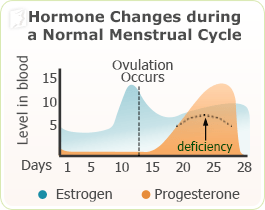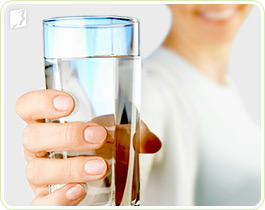Breast tenderness, also known as mastalgia, is common during PMS. It is usually described by women as a feeling of sore, heavy, tender, or painful breasts, in the days leading up to her period.
Breast tenderness during PMS can be very uncomfortable and in extreme situations can disrupt a woman's daily routine. There are different ways to treat breast tenderness, although it usually subsides when a woman's menstrual period ends each month.
Why Does Breast Tenderness during PMS Occur?
Swollen, tenderness, and slight pain in the breasts is normal during PMS.

Breast tenderness during PMS can occur because of changing hormone levels. Many women have breast tenderness during PMS because their imbalanced levels of estrogen and progesterone.
During an average cycle, women's breasts will change in size depending on the levels of hormones in the body. However, when breast tenderness during PMS occurs, there is often a rush of progesterone hormones to the breasts, which increases the size of the breasts and makes them sore.
Women going through menopause, and especially those women who are also on hormone replacement therapy (HRT) can also experience breast pain and tenderness.
When to Go to the Doctor
Breast tenderness during PMS is not a cause for concern on its own and is not a symptom of breast cancer. However, if your breast pain and tenderness is severe, has no easily identifiable cause, and persists beyond PMS you should consult a doctor.
It is also recommended to go to the doctor if you have symptoms in conjunction with breast pain and tenderness, such as:
- Pain in armpits or breasts that are not related to PMS or your period.
- Lumps, thickened tissue, or swelling in breasts or armpits.
- Any sign of infection in your breasts, such as redness, inflammation, or increased temperature.
- Change in size or shape in breasts or nipples.
- Nipple discharge
- A rash on or around the nipples.
It is important to see your doctor if you have other symptoms along with noncyclical breast pain and tenderness.
It is important that a woman experiences that she receives an annual mammogram after turning fifty.
Treating Breast Pain and Tenderness
Cyclical breast tenderness usually subsides on its own. If you are looking for ways to prevent tenderness or treat recurring cyclical breast pain, there are several different way you can help yourself.

- Eat a balanced diet and drink lots of fluids.
- Avoid eating salty foods, which can cause bloating and water retention.
Regular and moderate exercise is also recommended. Wear a supportive and well-fitting sports bra while working out.
- Choose a properly fitted-bra: it should support breasts while remaining comfortable.
- Place a heating pack or ice pack on top of the breasts to help relieve acute pain.
- Over the counter pain relievers can help alleviate pain and tenderness that happens during PMS.
- Certain types of birth control pills are more likely to help relieve breast pain and tenderness, while others may worsen it - it's best to consult with a physician.
Severe breast tenderness during PMS does not have to be endured because there are various different medications to assist with breast tenderness during PMS. Click for more information about treating breast tenderness during PMS.
Which are the best ways to cope with Breast Tenderness during PMS?
Three levels of approaches can be considered for treating breast tenderness during PMS:(1) lifestyle changes, (2) alternative approaches and (3) medication. The safest way is to start with the least risky approach and go on to the next level only if it is necessary.
Sources
- National Health Services UK. (2014). Breast pain. Retrieved from http://www.nhs.uk/Conditions/breastpaincyclical/Pages/Introduction.aspx
- U.S. National Library of Medicine. (2012). Breast pain. Retrieved from http://www.nlm.nih.gov/medlineplus/ency/article/003152.htm
- U.S. National Library of Medicine. (2014). Premenstrual breast pain. Retrieved from http://www.nlm.nih.gov/medlineplus/ency/article/003153.htm
